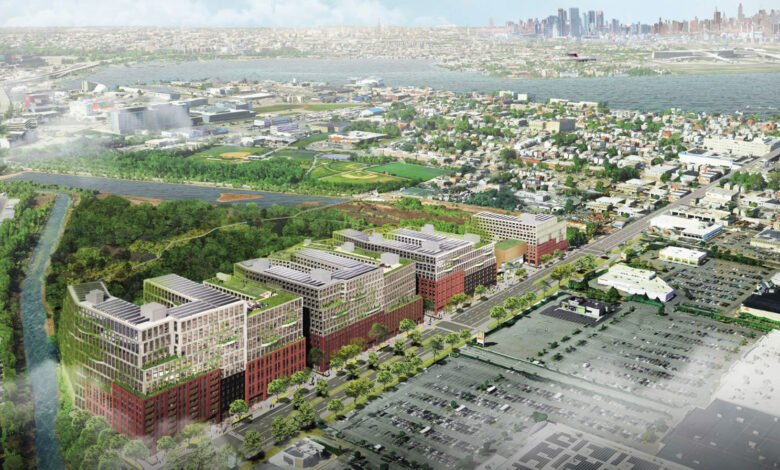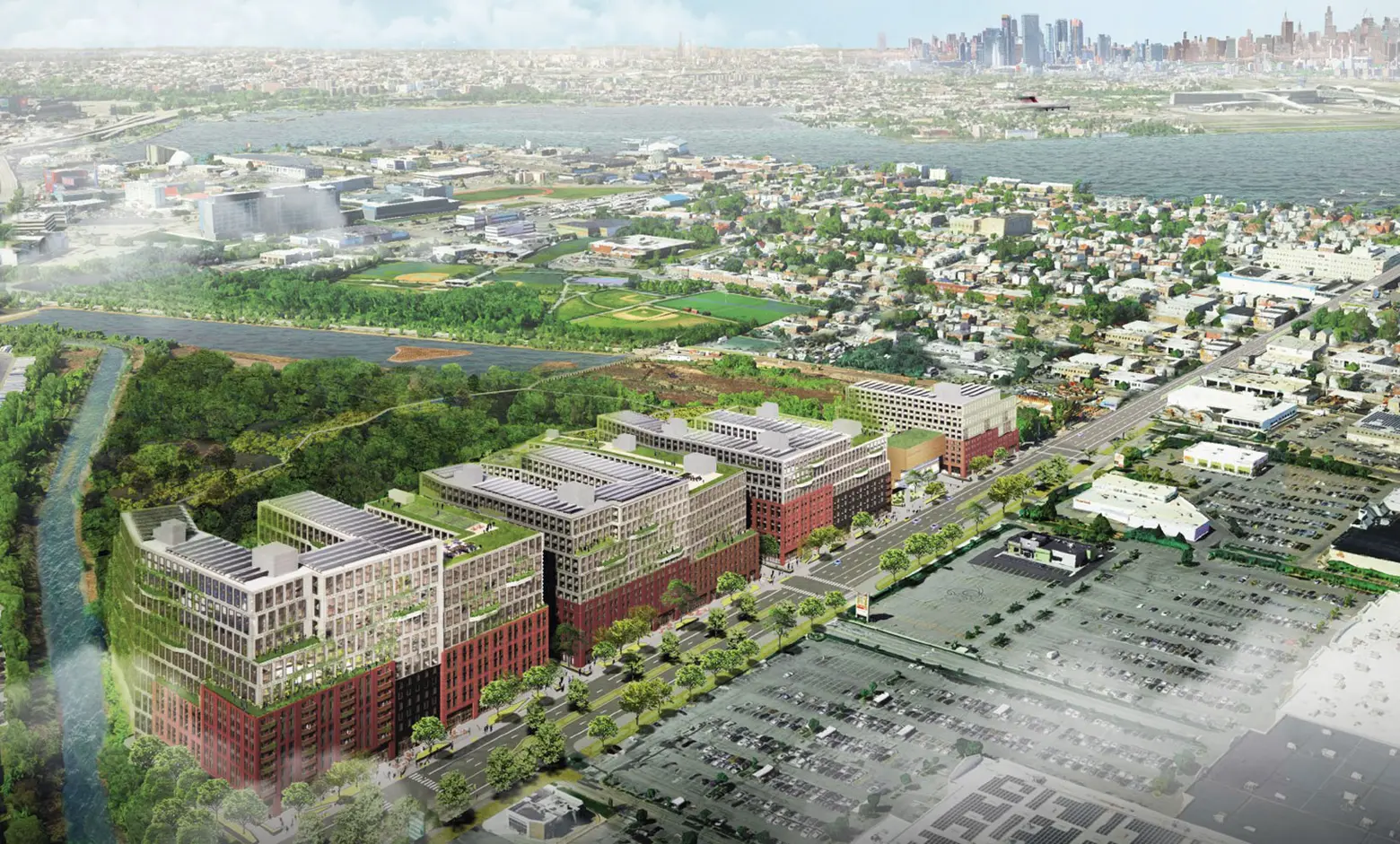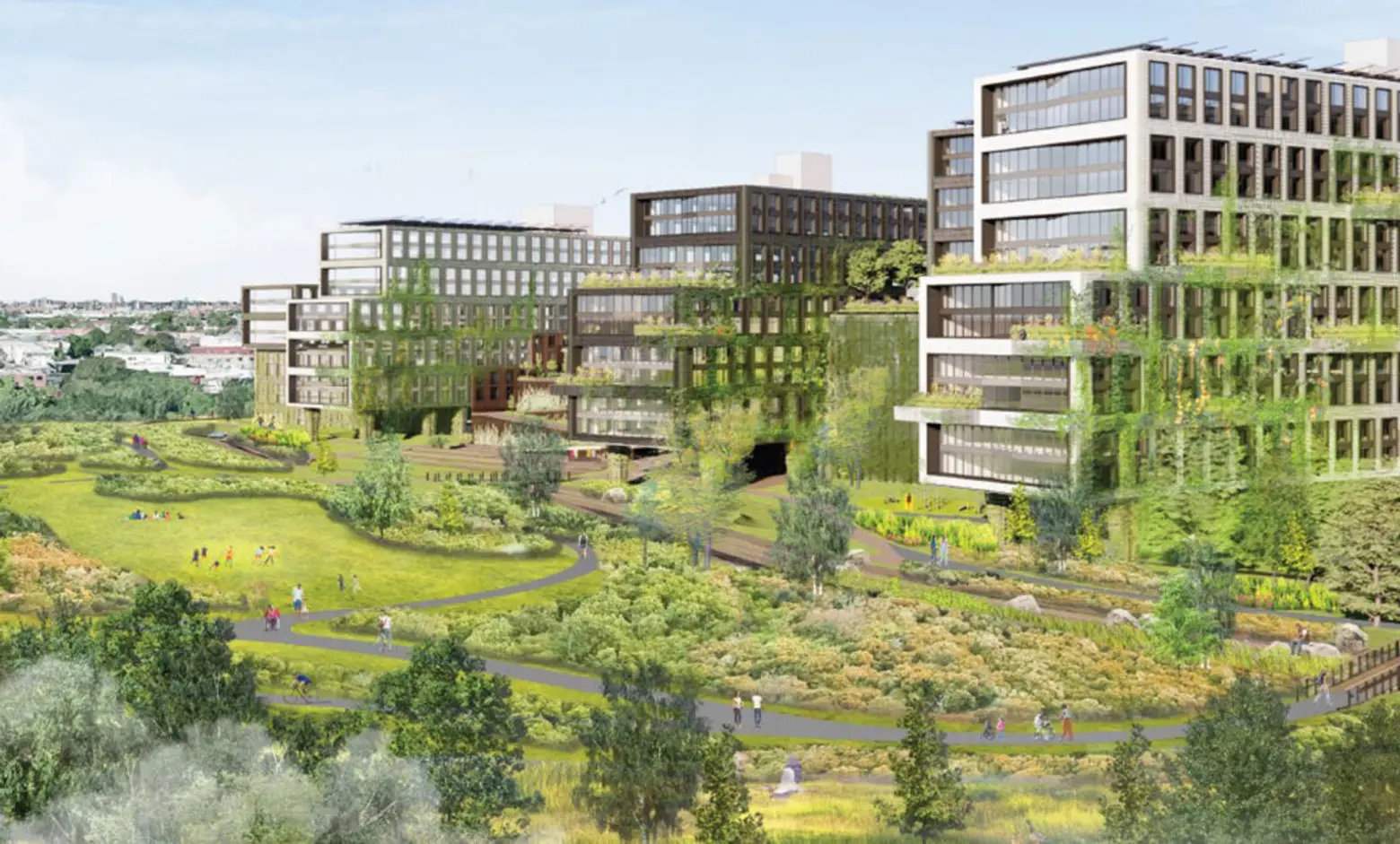NYC wants to build 3,000 new homes at former Flushing Airport site


All images courtesy of S9 Architecture
A massive housing proposal in Queens would transform the long-vacant Flushing Airport into 3,000 new homes. Mayor Eric Adams on Monday unveiled a plan to turn the 80-acre city-owned site in College Point, which has been inactive since 1984, into a mixed-income development with affordable and market-rate workforce housing, as first reported by amNY. Owned by the city’s Economic Development Corporation, the land has reverted to a wetland, which will be preserved as part of the new development, according to the city.

Open from 1929 to 1984, Flushing Airport was once the city’s busiest airfield until the opening of LaGuardia in 1939. At its peak, the airport hosted small planes, police and television helicopters, and—notably, in the mid-1960s—the Goodyear Blimp, according to the Guardian.
In 2004, Mayor Michael Bloomberg proposed the first major effort to revitalize the site: a 585,000-square-foot distribution center for Korean wholesalers being priced out of Midtown Manhattan. The plan was ultimately scrapped following backlash from local residents over the heavy truck traffic it would bring to the neighborhood.
Protests included rallies at the expressway exit, which famously “backed up traffic all the way to the toll booths on the Bronx side of the Whitestone Bridge,” Paul Graziano, a historic preservation activist and longtime Flushing resident, recounted to the Guardian.
Nearly a decade later, in 2013, Bloomberg suggested converting the site into a park as part of a deal to transfer part of Flushing Meadows–Corona Park for an NYC FC soccer stadium. The plan also faced criticism from local community advocates and was ultimately abandoned.
The site represents one of the few remaining large-scale development opportunities in Queens. In November, the EDC issued a request for proposals to redevelop the property.
The winning bid, submitted by New York–based firms Cirrus Workforce Housing and LCOR Incorporated, is expected to generate $3.2 billion in economic impact over the next 30 years, while creating more than 1,300 construction jobs and 530 permanent positions.
The proposal includes several sustainable design elements, including a commitment to exploring mass timber construction and high-quality, publicly accessible landscaping. The plan aims to integrate the site with the surrounding wetlands through nature walks, seating areas, meandering paths, open space vistas, and wildlife habitats.
Through a partnership with the NYC Building Trades and Adams, Cirrus and LCOR have committed to building and operating the development with 100 percent union labor and incorporating workforce housing. The project will be constructed by Building Trades members using union pension fund investments.
“The redevelopment of the former Flushing Airport will deliver thousands of affordable and accessible homes that are financed by, built by, and lived in by union workers, as a result of our partnership with Cirrus and Mayor Adams,” Gary LaBarbera, president of Building and Construction Trades Council of Greater New York, said.
“Thanks to this generational program, this project and others like it will continue to reinforce labor’s historic role in boosting the middle class, generating family-sustaining careers, and providing our communities with economic stimulus. Hardworking New Yorkers, like our tradesmen and tradeswomen, deserve to live comfortably and raise their families in the city they serve.”
Local residents remain wary of the newest iteration of the project. During an April meeting of the College Point Civic & Taxpayers Association, more than 30 members voiced concerns about potential impacts on adjacent wetlands.
Erik Menjivar, the group’s environmental chairman, explained that wetlands serve as natural filters and provide vital habitats for wildlife. He also highlighted that the site sits atop freshwater aquifers that could be used as an emergency water source for the city, raising fears that development might put them at risk, according to the Queens Chronicle.
In response, NYCEDC stated that fewer than 30 of the 80 acres are legally developable, and that because the site includes state- and federally recognized freshwater wetlands, developers must comply with strict protection and permitting requirements.
Andrew Kimball, CEO of NYCEDC, told amNY that the wetlands—a natural way to minimize flooding—will stay.
The project falls under Adams’ “City of Yes” housing plan, which uses innovative zoning tools to enable new housing construction across the five boroughs. It also builds on an executive order issued last August that directed city agencies to evaluate whether housing could be built on any of their properties.
“For 40 years this land has just been sitting around. When we were talking about needing new housing, we weren’t looking at locations like you see here,” Adams said. “We’re turning over every opportunity, including outdated office buildings, city buildings, and requiring all of our agencies to review their portfolios and find city-owned sites for housing.”
RELATED:
Source link

